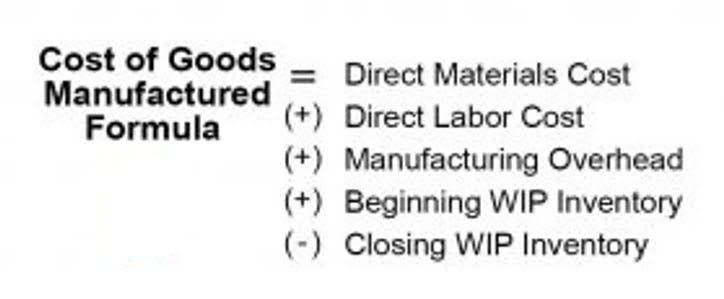
By doing this, we see the gross profit margin, which helps businesses decide on pricing and how to manage costs to generate more money. This step is part of creating a contribution margin statement, which is a type of profit and loss statement. It shows us the money made from selling products or services after covering the costs to make them. This statement highlights the importance of managing regular income, operating income, and the costs involved in making products or services. As you will learn in future chapters, in order for businesses to remain profitable, it is important for managers to understand how to measure and manage fixed and variable costs for decision-making.
Variable costs

You’ll notice that the above statement doesn’t include the contribution margin. That’s because a contribution margin statement is generally done separately from the overall company income statement. To calculate the contribution margin, you need more detailed financial data to calculate EBIT. EBIT features in a company income statement as it gives the operating figures of a business more context.

Fixed and Variable Expenses
- In a different example than the previous one, if you sold 650 units in a period, resulting in $650,000 net profit, your revenue per unit is $1,000.
- To calculate this figure, you start by looking at a traditional income statement and recategorizing all costs as fixed or variable.
- To find this, we subtract the variable production costs from sales and then divide by the sales again.
- Now that you know the formulas, the benefits, how to integrate this financial statement into your analysis, and the common questions surrounding it, you’re well on your way to understanding your business’s contribution margin.
- The point at which revenue and expenses are equal is known as the break-even point.
- By doing this, we see the gross profit margin, which helps businesses decide on pricing and how to manage costs to generate more money.
- And finally, the gross margin is replaced in the statement by the contribution margin.
Thus total variable cost of goods sold is $320,520, and total variable selling and administrative costs are $54,000. These two amounts are combined to calculate total variable costs of $374,520, as shown in panel B of Figure 5.7 “Traditional and Contribution Margin Income Statements for Bikes Unlimited”. The contribution margin income statement shown in panel B of Figure 5.7 clearly indicates which costs are variable and which are fixed.
Fixed costs
- Depending on the type of business, either EBIT or EBITDA can be a better measure of the company’s profitability.
- It’s crucial to point out the importance of correctly distinguishing between fixed and variable costs to ensure accurate figures.
- It separates fixed and variable costs to show which products or services contribute most to generating profit.
- A contribution margin income statement deducts variable expenses from sales and arrives at a contribution margin.
A high Contribution Margin Ratio indicates that each sale produces more profit than it did before and that the business will have an easier time making up fixed costs. A low Contribution Margin Ratio, on the other hand, suggests that there may be difficulty in covering fixed costs and making profits due to lower margins on individual sales. The contribution margin is computed as the selling price per unit, minus the variable cost per unit. Also known as dollar contribution per unit, the measure indicates how a particular product contributes to the overall profit of the company. The “contribution income statement” is a special recipe to see how sweet your lemonade sales are. Variable costs probably include cost of sales (the cost of goods sold) and a portion of selling and general and administrative costs (e.g., the cost of hourly labor).
A high contribution margin cushions the fall from unexpected costs and dips in sales. That’s why any business worth its salt will look contribution margin income statement to improve its margins wherever possible. Before you begin your calculations, you’ll need to understand fixed and variable expenses.
Fixed Cost vs. Variable Cost
If variable expenses were $250,000, so you’d have $385 in variable expenses per unit (variable expenses÷units sold). For example, if your product revenue was $500,000 and total variable expenses were $250,000, your contribution margin would be $250,000 ÷ $500,000, or 50%. As a result, if a company wants to cut costs in order to increase profits, it will usually look into the variable costs that can be cut. If your product revenue is $500,000 and your total variable expenses are $250,000, your contribution margin is $250,000 $500,000, or 50%.
NON CURRENT LIABILITIES: Examples & Importance In Accounting
Just as each product or service has its own contribution margin on a per unit basis, each has a unique contribution margin ratio. The contribution margin income statement shows fixed and variable components of cost information. This statement provides a clearer picture of which costs change and which costs remain the same with changes in levels of activity. Unlike a traditional income statement, the expenses are bifurcated based on how the cost behaves. Variable cost includes direct material, direct labor, variable overheads, and fixed overheads.

While the contribution margin shows the money left over for paying fixed expenses and profit, income is the total of a company’s revenue, other investments, and losses. To calculate total variable costs, we multiply this by our 1,000 units and get $28,000. Although variable costs are more difficult to track, they are absolutely essential in predicting the true profitability of products such as electric vehicles, despite reductions in fixed costs. The contribution format income margin is essential for understanding the financial performance of individual products or services and is used to make informed decisions about pricing, production, and cost management. The contribution margin income statement is a special format of the income statement that focuses on bifurcated expenses for better understanding.
Leave a Reply